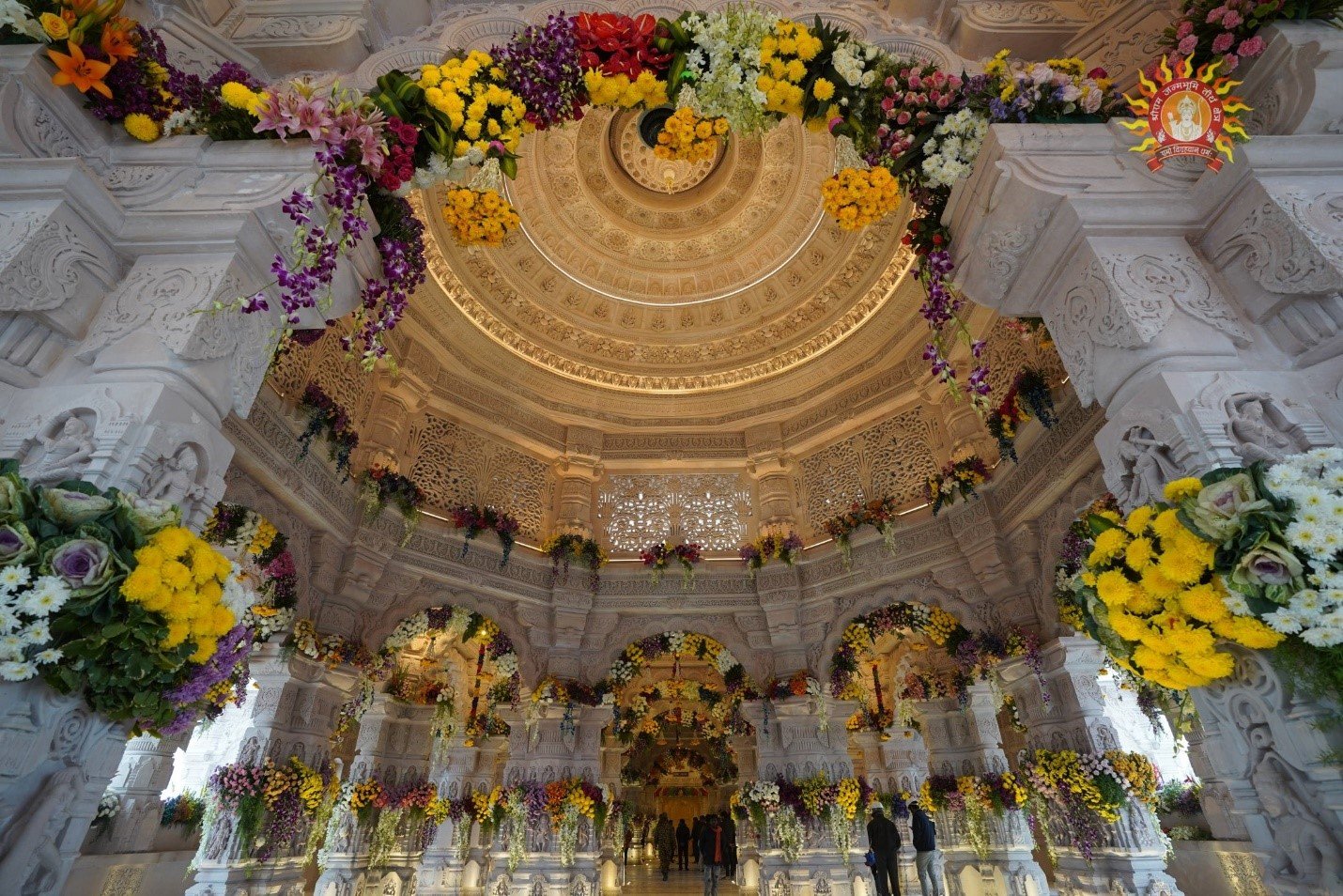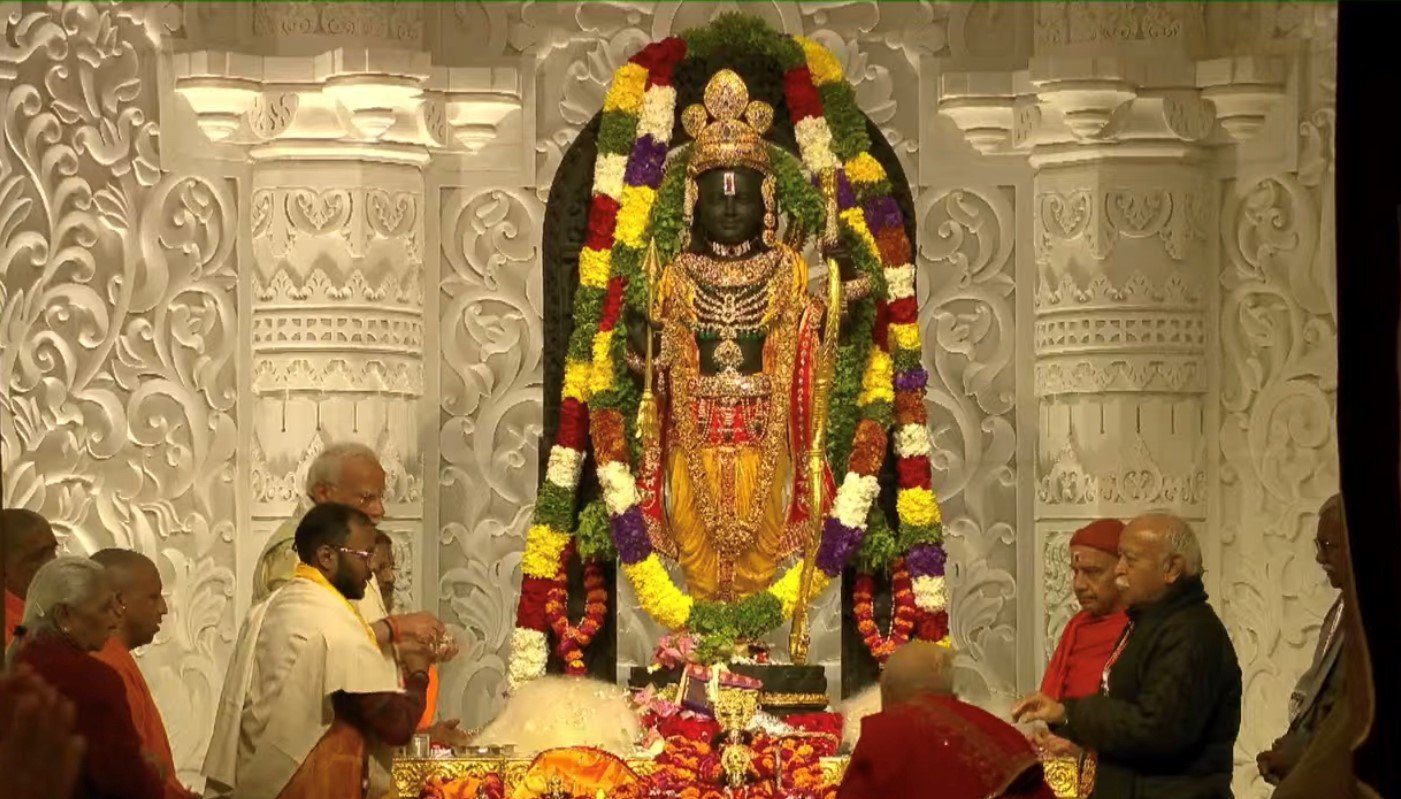The Ram Janmbhoomi Mandir (Ram temple) has been inaugurated in Ayodhya, Uttar Pradesh, believed to be the birthplace of Lord Ram in an intricate ceremony in the presence of Prime Minister Narendra Modi who had been preparing his body and spirit for the sacred rite for 11 days. Those present inside the temple included priests, Rashtriya Swayamsevak Sangh (RSS) chief Mohan Bhagwat, Uttar Pradesh Chief Minister Yogi Adityanath and Anandiben Mafatbhai Patel.
Seated outside the temple were thousands of priests, devotees and celebrities from across the country. The Congress Party top brass has earlier turned down the invitation citing that the ceremony is a political event. The Opposition had also stated it did not require invitation to visit any religious place. Some top Hindu priests also boycotted today’s program citing that it is not a right to inaugurate an incomplete temple.
During the ceremony, the 55-inch idol portraying Lord Ram when he was five years old was unveiled. The idol was sculpted by Arun Yogiraj from Karnataka.
The Ram temple is 380 feet in length, 250 feet wide and has a height of 161 feet and is supported by 392 pillars and 44 doors. The pillars and walls of the temple showcase intricately sculpted depictions of Hindu deities, gods, and goddesses.
The foundation of the Mandir has been constructed with a 14-meter thick layer of roller-compacted concrete (RCC), giving it the appearance of artificial rock. No iron is used anywhere in the Ram temple. For protection against ground moisture, a 21-foot-high plinth has been constructed using granite. The temple complex has a sewage treatment plant, water treatment plant, water supply for fire safety and an independent power station. The Mandir has been constructed employing the country’s traditional and indigenous technology.

The materials used in the Ram temple include Rajasthan’s Makrana marble and pink sandstone, and Karnataka’s Charmouthi sandstone. Black stone used for Lord Ram’s idol originates from Karnataka while the carved wooden doors and handcrafted fabrics came from Arunachal Pradesh and Tripura. Brassware from Uttar Pradesh and polished teakwood from Maharashtra are also adorn the temple.


